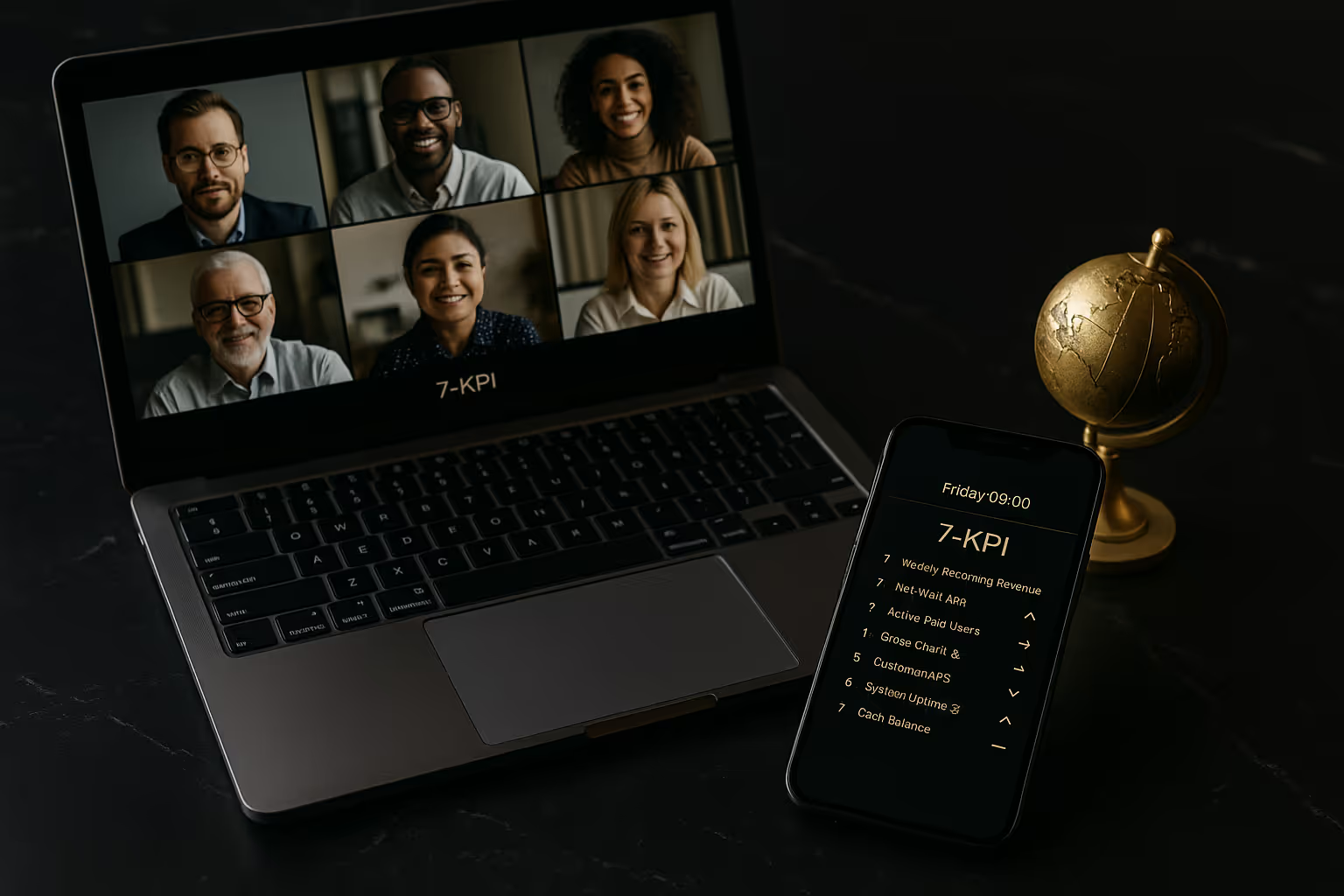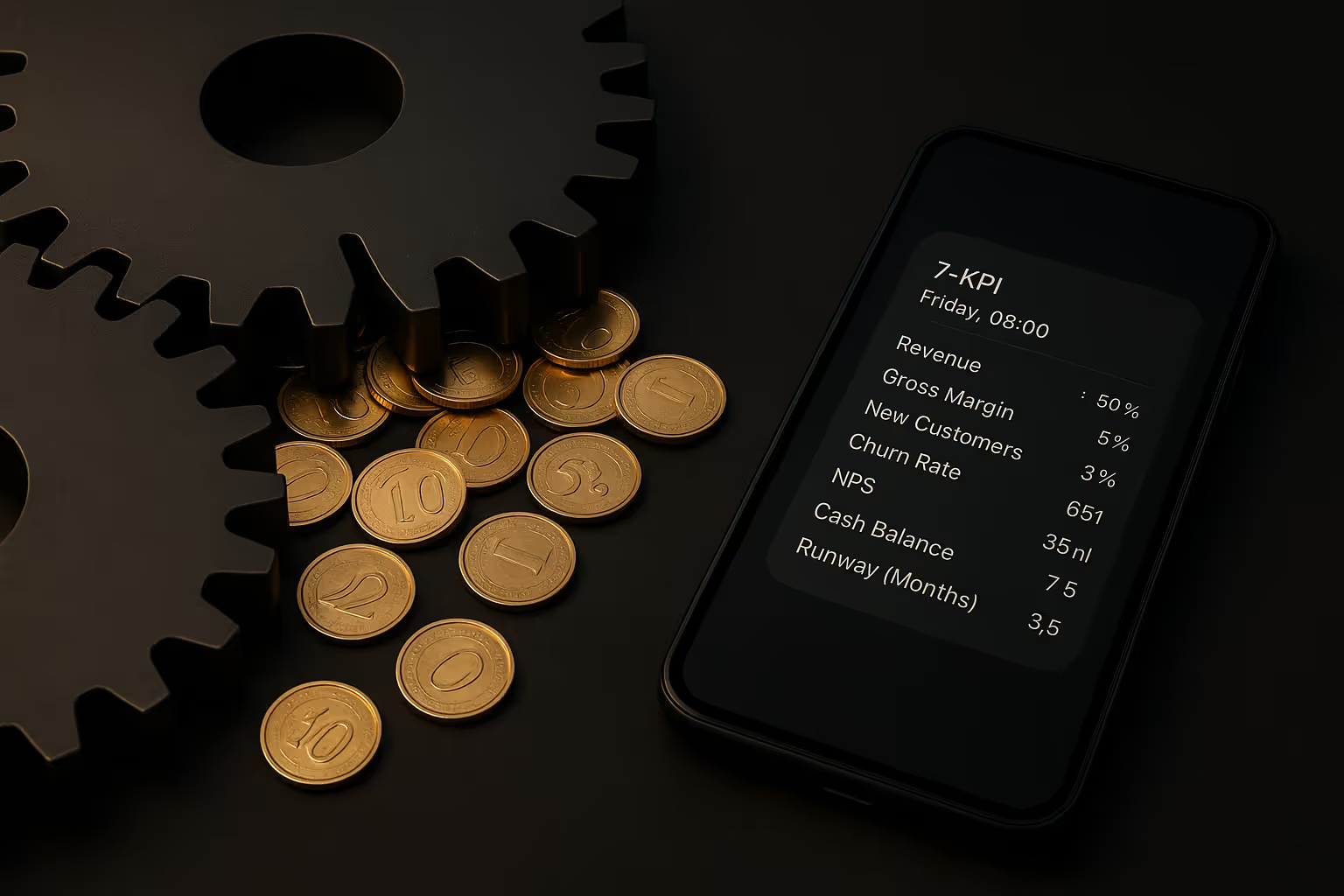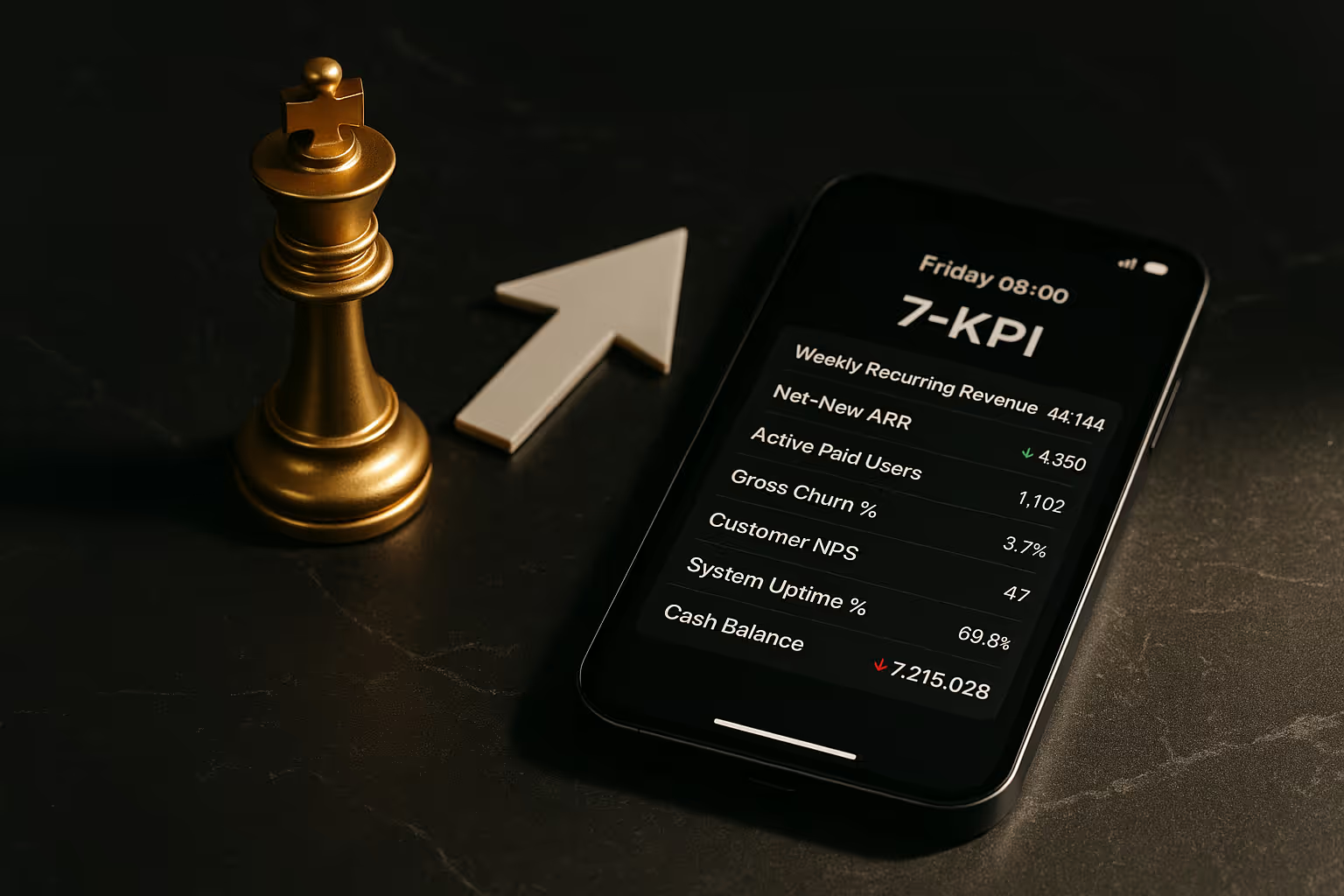One KPI, One Owner: The Hidden Power of Manual Accountability

Key Takeaways
- A KPI without a single owner is ignored; with one owner, it thrives.
- Manual updates create reflection, public commitment, and ownership.
- Accountability transforms metrics from numbers into personal missions.
The One-Owner Rule
If a KPI has no clear owner—or too many—nothing happens. This is social loafing in action: when responsibility is diffuse, effort drops. Apple uses the Directly Responsible Individual (DRI) model, Amazon relies on single-threaded leaders—both ensure one person wakes up thinking about their KPI every day.
Manual Updates: Friction with Purpose
Automation pulls data; manual entry pulls attention.
When an owner physically types “3.7 s” for page-load time, they:
- Reflect — They double-check the number and the story behind it.
- Commit publicly — Everyone sees who stands behind the metric.
- Build memory — The KPI never fades into dashboard wallpaper.
Research shows accountability paired with conscious reporting can boost follow-through by up to 95% — making each manual keystroke worth it.
Why It Works
- Psychological ownership: “My KPI” means I’ll protect and improve it.
- Real accountability: One name, one result — no hiding.
- No social loafing: The bystander effect disappears.
Together, these forces make metrics personal, prompting problem-solving before meetings, not after.
Conclusion
Software can track data; only people move it. Assign each KPI to a single owner and let them report it manually. You’ll spot issues faster, cut noise, and build a culture where everyone acts like an owner.
One person, one number, once a week. It’s simple, human, and it works.
Mini-FAQ
Q: Won’t manual updates waste time?
A: It’s 30 seconds that pays back in sharper insight and accountability.
Q: What if the owner is unavailable?
A: Use a backup owner — but never “everyone’s KPI.”
Q: Can automation and manual reporting co-exist?
A: Yes — track data automatically, but require owners to post their key KPI by hand weekly.

Backups are useful for coverage when the primary owner is unavailable, but they should not dilute accountability. The primary owner’s name stays attached to the KPI, ensuring clarity about who is ultimately responsible for performance and action.

When multiple people share responsibility, accountability blurs — a phenomenon known as social loafing. Assigning one owner to each KPI ensures that someone is directly responsible for tracking, interpreting, and acting on changes. This clarity speeds response times and keeps important metrics from slipping through the cracks.

Automated dashboards make data passive. Manual submission forces the owner to actively check, understand, and commit to their number. This moment of reflection improves accuracy and increases personal ownership, turning metrics into missions instead of background noise.




